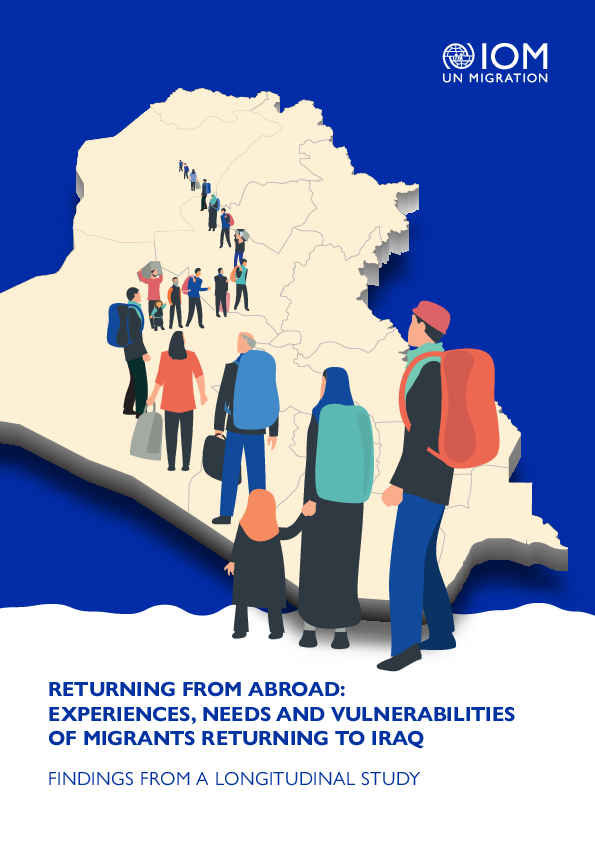-
Countries
-
Data and Analysis
-
Special Focus
-
Crisis Responses
Iraq — Returning from Abroad: Experiences, needs, and vulnerabilities of migrants returning to Iraq

Contacto
IraqDTM@iom.int
Idioma
English
Ubicación
Iraq
Fecha de instantánea
Aug 01 2020
Aug 31 2021
Actividad
- Survey
- Flow Monitoring
Migration from Iraq is multifaceted, characterized by different flows of emigration. In the post-2003 period, Iraqi nationals were mostly migrating to neighbouring countries, such as Jordan, Syria, Lebanon, and Iran. In the following years, outgoing migration has turned towards Turkey and countries outside the region, such as the United States, Canada, and Australia, as well as European countries like Germany, Greece and Finland. Migration has been connected to waves of conflict-driven displacement resulting from the Iraq-Iran War (1980-1988), the Gulf War (1990-1991), the US occupation of Iraq and sectarian war (2003-2011), and the armed conflict against the Islamic State of Iraq and the Levant (2013-2017). Beyond fuelling international movements, the latter conflict also resulted in around 6 million of internally displaced people. Throughout these periods, migration has been used as a strategy to overcome economic instability, political unrest, and the lack of security, equality, and social justice in Iraq; however, others have migrated abroad for economic, health or business reasons.
Iraqi migrants are estimated to be more than 2 million, and return migration from abroad is an increasingly important dimension of the Iraqi migration landscape. After the end of the sectarian war and the conflict against the Islamic State, many Iraqis decided to return voluntarily. Moreover, among those who have emigrated as asylum seekers, not all of them have obtained a protection status (such as refugee status) that allows them to remain in the host country; frequently, such people are hence forced to return to Iraq. As of December 2022, approximately five million Iraqi nationals have returned from abroad. However, the exact number of Iraqi returnees is difficult to establish because not all of them have returned through programmes of assisted voluntary return and flows are thus difficult to track. Little is known about the conditions faced by returned migrants in Iraq. Due to the lack of statistical data and research, it is not possible to have a comprehensive picture of the challenges faced by nationals upon return, or their challenges of reintegrating in Iraq.
